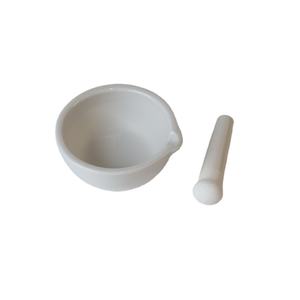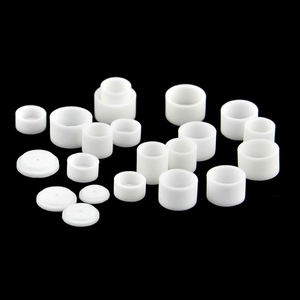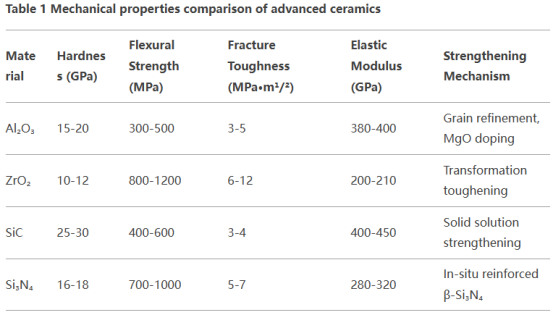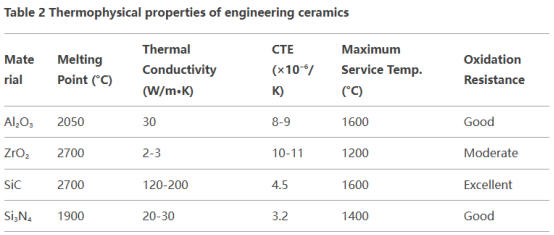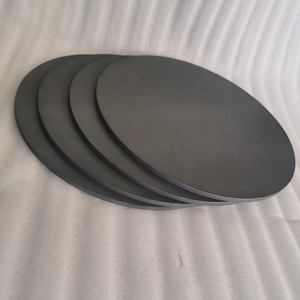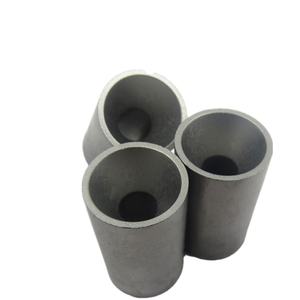Product Review
Advanced structural porcelains, due to their unique crystal framework and chemical bond characteristics, show performance advantages that metals and polymer products can not match in extreme environments. Alumina (Al ₂ O TWO), zirconium oxide (ZrO TWO), silicon carbide (SiC) and silicon nitride (Si two N ₄) are the 4 major mainstream engineering porcelains, and there are essential differences in their microstructures: Al ₂ O four belongs to the hexagonal crystal system and relies on strong ionic bonds; ZrO ₂ has three crystal types: monoclinic (m), tetragonal (t) and cubic (c), and gets unique mechanical homes with stage modification strengthening mechanism; SiC and Si Two N four are non-oxide ceramics with covalent bonds as the primary element, and have stronger chemical security. These structural differences directly result in considerable distinctions in the preparation procedure, physical properties and design applications of the four. This post will systematically evaluate the preparation-structure-performance connection of these four porcelains from the perspective of products scientific research, and discover their prospects for commercial application.
(Alumina Ceramic)
Preparation process and microstructure control
In terms of preparation procedure, the four ceramics reveal evident distinctions in technological routes. Alumina ceramics use a relatively typical sintering process, normally using α-Al two O four powder with a purity of greater than 99.5%, and sintering at 1600-1800 ° C after dry pressing. The trick to its microstructure control is to prevent abnormal grain growth, and 0.1-0.5 wt% MgO is usually included as a grain limit diffusion inhibitor. Zirconia ceramics require to present stabilizers such as 3mol% Y TWO O five to maintain the metastable tetragonal stage (t-ZrO two), and utilize low-temperature sintering at 1450-1550 ° C to stay clear of too much grain development. The core procedure difficulty hinges on accurately regulating the t → m stage change temperature home window (Ms factor). Because silicon carbide has a covalent bond ratio of up to 88%, solid-state sintering needs a high temperature of greater than 2100 ° C and relies upon sintering aids such as B-C-Al to develop a liquid stage. The response sintering technique (RBSC) can attain densification at 1400 ° C by penetrating Si+C preforms with silicon melt, however 5-15% cost-free Si will continue to be. The preparation of silicon nitride is the most intricate, usually utilizing general practitioner (gas stress sintering) or HIP (warm isostatic pressing) processes, adding Y ₂ O FIVE-Al ₂ O three series sintering aids to develop an intercrystalline glass stage, and warmth treatment after sintering to crystallize the glass stage can considerably improve high-temperature performance.
( Zirconia Ceramic)
Comparison of mechanical properties and enhancing mechanism
Mechanical homes are the core evaluation indications of structural ceramics. The four types of products show entirely various conditioning devices:
( Mechanical properties comparison of advanced ceramics)
Alumina mostly relies on fine grain fortifying. When the grain dimension is decreased from 10μm to 1μm, the strength can be boosted by 2-3 times. The outstanding durability of zirconia comes from the stress-induced phase change mechanism. The stress field at the crack suggestion activates the t → m stage makeover come with by a 4% quantity growth, leading to a compressive tension protecting effect. Silicon carbide can boost the grain border bonding strength through solid solution of aspects such as Al-N-B, while the rod-shaped β-Si six N ₄ grains of silicon nitride can produce a pull-out impact comparable to fiber toughening. Break deflection and connecting contribute to the renovation of toughness. It is worth noting that by building multiphase ceramics such as ZrO ₂-Si Three N Four or SiC-Al ₂ O FIVE, a selection of strengthening systems can be collaborated to make KIC surpass 15MPa · m 1ST/ TWO.
Thermophysical properties and high-temperature actions
High-temperature stability is the essential advantage of structural ceramics that differentiates them from standard materials:
(Thermophysical properties of engineering ceramics)
Silicon carbide displays the best thermal management performance, with a thermal conductivity of as much as 170W/m · K(equivalent to light weight aluminum alloy), which is because of its straightforward Si-C tetrahedral structure and high phonon propagation price. The reduced thermal growth coefficient of silicon nitride (3.2 × 10 ⁻⁶/ K) makes it have excellent thermal shock resistance, and the essential ΔT worth can get to 800 ° C, which is especially suitable for repeated thermal biking atmospheres. Although zirconium oxide has the highest possible melting point, the conditioning of the grain border glass phase at high temperature will trigger a sharp decrease in stamina. By adopting nano-composite innovation, it can be increased to 1500 ° C and still keep 500MPa toughness. Alumina will experience grain border slip above 1000 ° C, and the addition of nano ZrO ₂ can form a pinning effect to hinder high-temperature creep.
Chemical security and deterioration behavior
In a corrosive environment, the 4 kinds of porcelains show dramatically various failure devices. Alumina will liquify externally in solid acid (pH <2) and strong alkali (pH > 12) remedies, and the deterioration rate increases exponentially with enhancing temperature level, reaching 1mm/year in steaming focused hydrochloric acid. Zirconia has good resistance to not natural acids, however will certainly undertake low temperature level destruction (LTD) in water vapor atmospheres over 300 ° C, and the t → m stage transition will certainly bring about the formation of a tiny fracture network. The SiO two safety layer formed on the surface of silicon carbide offers it outstanding oxidation resistance listed below 1200 ° C, but soluble silicates will be created in molten alkali steel environments. The corrosion actions of silicon nitride is anisotropic, and the corrosion price along the c-axis is 3-5 times that of the a-axis. NH Two and Si(OH)four will certainly be produced in high-temperature and high-pressure water vapor, causing material bosom. By maximizing the structure, such as preparing O’-SiAlON ceramics, the alkali deterioration resistance can be increased by more than 10 times.
( Silicon Carbide Disc)
Normal Design Applications and Case Research
In the aerospace field, NASA uses reaction-sintered SiC for the leading edge components of the X-43A hypersonic aircraft, which can withstand 1700 ° C wind resistant heating. GE Aviation makes use of HIP-Si four N four to produce generator rotor blades, which is 60% lighter than nickel-based alloys and enables greater operating temperature levels. In the medical field, the crack toughness of 3Y-TZP zirconia all-ceramic crowns has actually gotten to 1400MPa, and the service life can be extended to more than 15 years with surface area slope nano-processing. In the semiconductor sector, high-purity Al two O ₃ porcelains (99.99%) are made use of as cavity products for wafer etching devices, and the plasma deterioration price is <0.1μm/hour. The SiC-Al₂O₃ composite armor developed by Kyocera in Japan can achieve a V50 ballistic limit of 1800m/s, which is 30% thinner than traditional Al₂O₃ armor.
Technical challenges and development trends
The main technical bottlenecks currently faced include: long-term aging of zirconia (strength decay of 30-50% after 10 years), sintering deformation control of large-size SiC ceramics (warpage of > 500mm elements < 0.1 mm ), and high production expense of silicon nitride(aerospace-grade HIP-Si three N four gets to $ 2000/kg). The frontier growth directions are concentrated on: one Bionic framework layout(such as covering split structure to raise toughness by 5 times); two Ultra-high temperature level sintering technology( such as spark plasma sintering can attain densification within 10 mins); six Smart self-healing porcelains (having low-temperature eutectic stage can self-heal fractures at 800 ° C); ④ Additive manufacturing modern technology (photocuring 3D printing precision has gotten to ± 25μm).
( Silicon Nitride Ceramics Tube)
Future development patterns
In an extensive contrast, alumina will certainly still control the traditional ceramic market with its cost advantage, zirconia is irreplaceable in the biomedical field, silicon carbide is the recommended material for extreme settings, and silicon nitride has fantastic possible in the field of high-end equipment. In the next 5-10 years, through the integration of multi-scale architectural regulation and smart production technology, the performance boundaries of engineering ceramics are expected to accomplish new breakthroughs: for example, the design of nano-layered SiC/C ceramics can attain strength of 15MPa · m 1ST/ ², and the thermal conductivity of graphene-modified Al two O five can be enhanced to 65W/m · K. With the development of the “dual carbon” approach, the application scale of these high-performance porcelains in brand-new energy (fuel cell diaphragms, hydrogen storage materials), environment-friendly production (wear-resistant parts life boosted by 3-5 times) and various other fields is expected to keep an average annual development rate of greater than 12%.
Supplier
Advanced Ceramics founded on October 17, 2012, is a high-tech enterprise committed to the research and development, production, processing, sales and technical services of ceramic relative materials and products. Our products includes but not limited to Boron Carbide Ceramic Products, Boron Nitride Ceramic Products, Silicon Carbide Ceramic Products, Silicon Nitride Ceramic Products, Zirconium Dioxide Ceramic Products, etc. If you are interested in alumina tubing, please feel free to contact us.(nanotrun@yahoo.com)
All articles and pictures are from the Internet. If there are any copyright issues, please contact us in time to delete.
Inquiry us
Error: Contact form not found.

